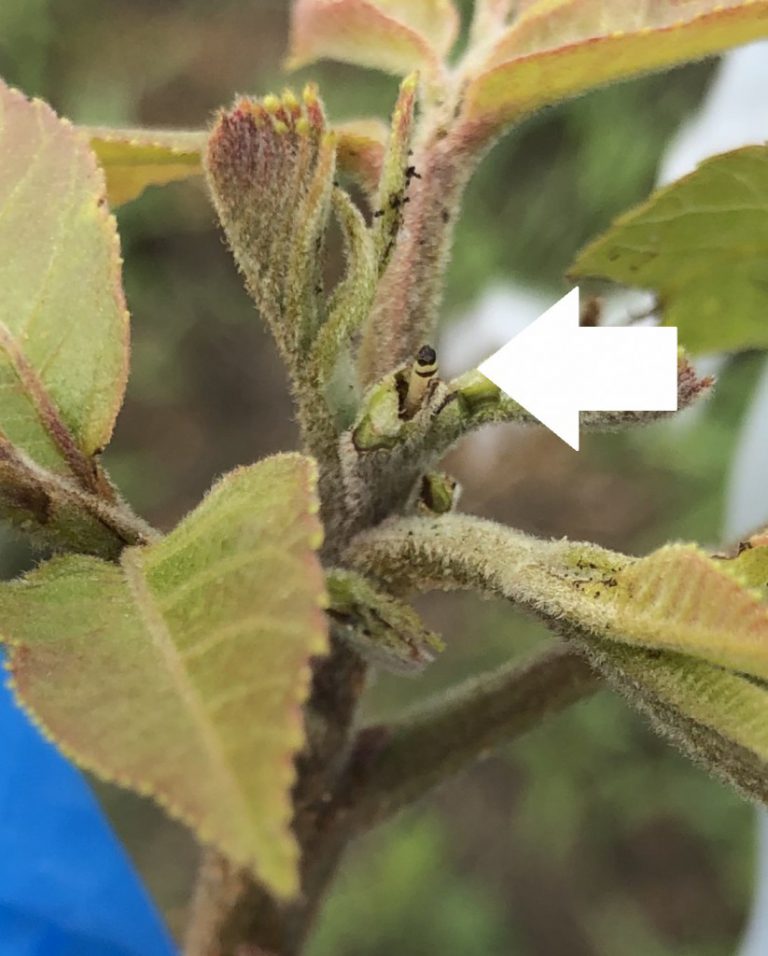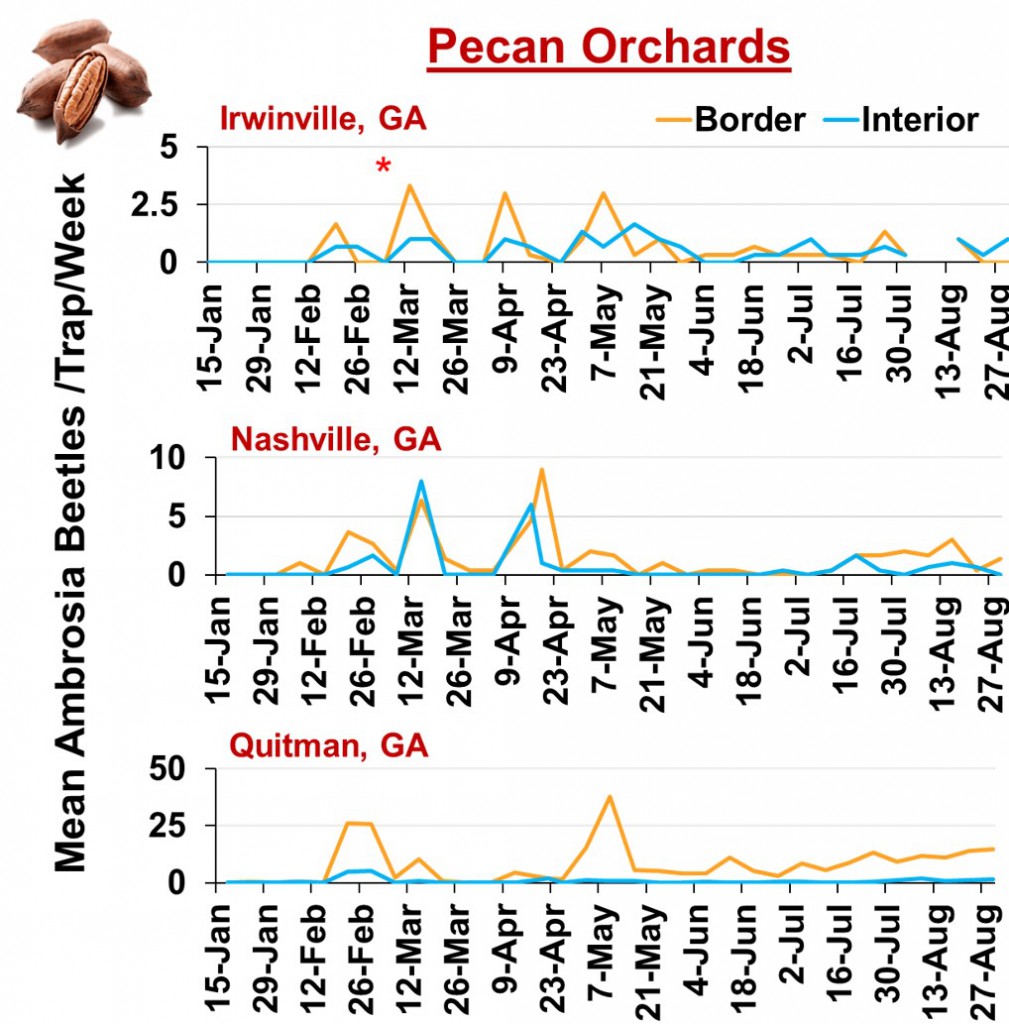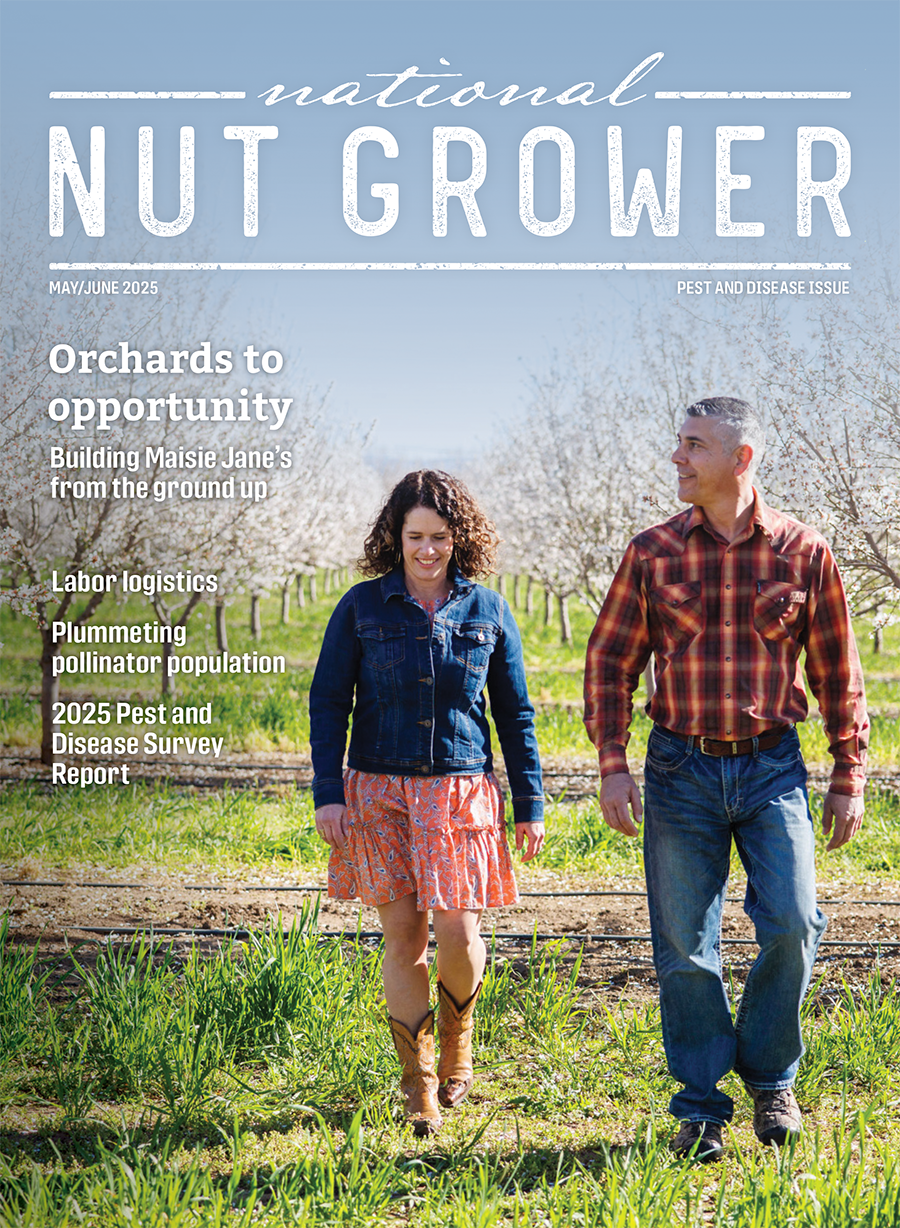
May 27, 2021Insect issues on young pecan trees addressed in Georgia
A number of issues are being addressed in this year’s Georgia pecan crop development, including the following.
Pecan budmoth
Following a cool April, we are seeing budmoth pressure increase. At the University of Georgia (UGA) Vidalia Onion Research farm, our trees sprayed in early April look great. However, I left one row non-sprayed so I could replicate a budmoth insecticide efficacy trial we were doing in Montgomery County. The Montgomery trial was sprayed April 8th and the replicated version on April 30. This week, every treatment and tree in the April 30 sprayed trial was damaged. I even found some caterpillars. Other growers have told me they are starting to see the pressure from budmoth now.
Whether you sprayed or not in April, any trees between ages of 1 to 3 years old need to be scouted for budmoth injury. If you find worms, use Lorsban as a quick knockdown. Then follow up with an insect growth regulator to provide residual control (e.g., Intrepid, Intrepid Edge, Minecto Pro). You can mix these up in small sprayers as a percent solution.
| Insecticide | Plant Uptake | Rate / 10 gallons |
| Intrepid | Not absorbed into leaf; not translocated | 1 oz |
| Intrepid Edge | Absorbed into leaf; not translocated | 1 oz |
| Lorsban | Contact kill only | 2.4 oz |
| Minecto Pro | Systemic | 1.5 oz |
Ambrosia beetles
We are also seeing increase in beetle attacks on very young trees throughout Southeast Georgia. So far, the attacks are not very severe. But it shows the beetles are flying again. This is not unusual as Dr. Acebes’ trapping data shows they can have a second flight toward the beginning of spring.
If you’re going back through the orchard, another pyrethroid treatment is not a bad idea. One of the most important things you can do is spray down into the tree guards.
Camphor shot borer
We looked at second and third-year trees in Emanuel County this week where random trees were having trouble leafing out compared to all other trees (Figure 4). There were holes in the trunk of the tree, but they were clearly larger than our typical ambrosia beetle holes (Figure 3). Some holes were ‘weeping’ but some were not ‘weeping.’ The one common denominator we found was that these ‘weak’ trees were mostly one variety that did not have many lateral roots when planted compared to the other variety.
Cutting the tree at a cross-section, you can see the beetle and how its tunnel restricts movement of water up through the vascular system. The beetle turned out to be an introduced species called the camphor shot borer, Cnestes mutilatus. It is also an ambrosia beetle but does not usually produce toothpicks. This could be because the hole is so much larger than our general ambrosia beetle (Xylosandrus) holes. They are strongly attracted to ethanol and have been known to bore into plastic gas cans holding fuel with ethanol additives.
William Hudson, Extension entomologist, said, “The problem here is related to poor establishment of the trees and their continued struggle to get growing. I’ve seen the same thing in the orchard where my traps are located – no attacks on trees planted this year or last, but a couple of 4-year trees that were obviously growing less well than the others around them attacked by beetles. Interestingly, the trees attacked were at the end of the orchard where the traps catch far fewer (only about 10% as many) beetles than the traps that are closer to the newest plantings. Stress really does matter.”
Will an ambrosia beetle insecticide spray kill them? Yes. However, the underlying problem is the stressed trees. When trees are not growing well – especially in their first year – cut them back some more. This allows roots more time to grow and reduces how much of the tree they must supply water and nutrients. If there are a lot of holes, the tree probably will not make it.
– A. Acebes, W. Hudson,
Figure 1 at top. Pecan budmoth comes out of a damaged terminal in Toombs County on May 19.











 Figure 3. Holes from camphor shot borer are larger than our typical ambrosia beetle we manage.
Figure 3. Holes from camphor shot borer are larger than our typical ambrosia beetle we manage.

